
Category: Uncategorized
Claudio Arrau plays “Gnomenreigen” by Franz Liszt. Live in Carnegie Hall (1953)
Claudio Arrau (1903-1991) was a Chilean pianist noted for his very wide repertory. He studied in the Stern Conservatory in Berlin. His teacher there, Martin Krause, had been a student of Franz Liszt’s–it’s hard to get a pedagogical lineage that is more direct than that. Young Claudio had learned Liszt’s Transcendental Etudes by the time he was 11 years old. Soon after, Claudio was making piano rolls for player pianos.
In the early 1950s, Carnegie Hall made some promotional films–perhaps intended to be used as television broadcasts. One of these promotional films is of the mature Claudio Arrau playing a very demanding Liszt solo work, the “Gnomenreigen” (Dance of the Gnomes), which is one of Liszt’s Two Concert Études (Zwei Konzertetüden), S.145. By the way, I was a little surprised to see that Arrau was playing a Baldwin piano, and not that other brand–and I don’t mean Yamaha!
On August 17, 1982, the music conglomerate Polygram’s Philips label released a Digital Audio Compact Disc of Chopin Waltzes performed by Claudio Arrau. That was the first-ever classical-music CD. From piano rolls to the first classical compact disc–what an amazing life. Of course, these days, you can pick up the CD from an Amazon non-profit vendor such as Goodwill for all of about four dollars.
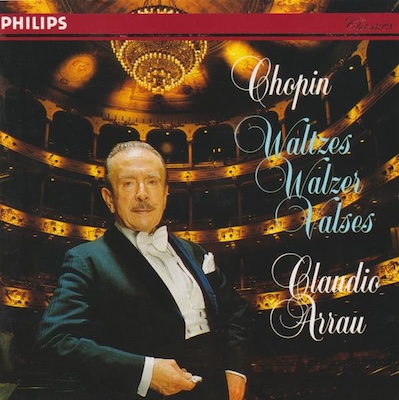
# ##
Say “Saluton!” To “Future Audiophile.”

Jerry del Colliano started out as a music student, studying music and Music Business courses in tandem. Then, in the 1990s, he was hired by Christopher Hansen Ltd., the legendary Los Angeles high-end audio dealer. In a twinkling, Jerry’s passion for music catapulted him into the upper echelons of audio retailing, being a standout seller of Wilson Audio Specialties loudspeakers. Del Colliano later worked for (the man; the myth; the legend!) Mark Levinson, at Cello Music and Film, also in Los Angeles.
He later went into media and web journalism, publishing AudioRevolution.com, HomeTheaterReview.com, and AudiophileReview.com. More recently, he has launched a new webzine targeting younger music lovers and the audiophile-curious.
The “Unique Selling Propositions” of Future Audiophile are that audiophile “terms of art” (or, if you prefer, jargon) are usually linked to definitions or explainers; and that there is a standard template that all equipment reviewers must follow.
The Future Audiophile review template is so Socratic in method that it gives me flashbacks to law school… but it serves the purpose of reining in authorial flights of fancy (or, recountings of free trips to Sardinia for molto gelato gratuito–ahem).
Examples:
What Makes the Parasound Halo P 6 So Special?
Why Should You Care About the Parasound Halo P 6 ?
Some Things You Might Not Like About the Parasound Halo P 6
Listening to the Parasound Halo P 6 Preamplifier…
Does the Parasound Halo P 6 Have Any Resale Value?
Who Is the Competition for the Parasound Halo P 6?
Final Thoughts on the Parasound Halo P 6 Preamplifier
… you get the idea.
In an email, del Colliano told me that he is “aiming to reach younger and more diverse fans who are looking more for the lifestyle benefits of listening to music, as opposed to some of the more voodoo-inspired black magic that the hobby sometimes flirts with.” He also told me that Future Audiophile has “reviewers who have over 40 years of audiophile experience, as well as audiophile reviewers who just turned 40 years old.”
So, I wish them much success.
Note, I do not plan to write for Future Audiophile, in that I have been neglecting my own blog, and I have a hugely important recording project in the works.
# # #
Say “Hello” to Hagerty Media!
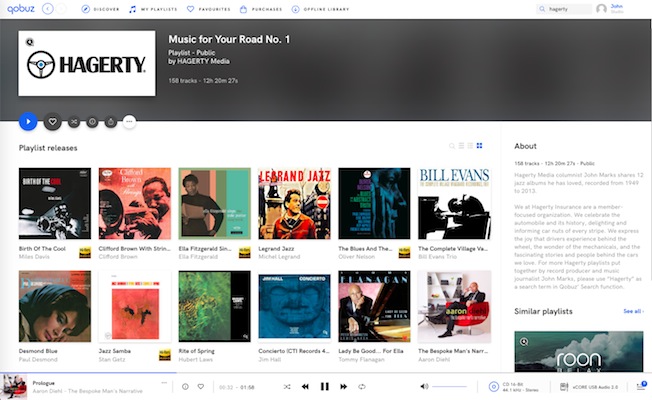
I have a new writing job, and I am having lot of fun with it.
I have started writing a column for Hagerty Media, the media and communications division of the Hagerty collector-car insurance business. My new column is called “Music for Your Road.” The (Somewhat) Unique Selling Proposition of my column is that all the recordings I recommend are gathered in a public playlist hosted by the Qobuz streaming service.
So, if you go to Hagerty’s Media website (which is public-access) to read my new column, at the end there is a link that guides you to my first “Music for Your Road” Qobuz playlist. More after the jump!
CLPS 0500 Perception and Mind, John Marks Guest Lectures Further Reading, etc. (5)
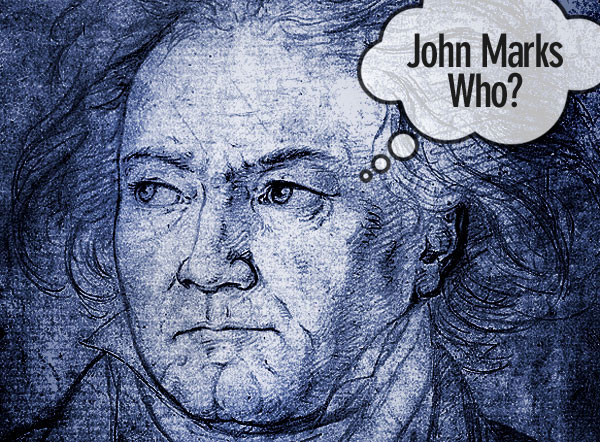 Courtesy Stereophile magazine.
Courtesy Stereophile magazine.
If anyone is interested, here are more groovy things to explore. Feel free to consider this your Suggested Voluntary Summer Reading and Listening List.
In 1965, the Soviet composers Dmitri Shostakovich and Rodion Shchedrin were both vacationing in Armenia. Shostakovich asked Shchedrin the Desert Island Score question: Were Shchedrin to be exiled to a deserted island and could bring only one score with him, which would it be? Shchedrin’s answer was prompt: J.S. Bach’s Die Kunst der Fuge (The Art of the Fugue).
When Shchedrin then turned the question on him, Shostakovich answered, “Das Lied von der Erde, by Mahler.” (Tr.: The Song of the Earth.) Which is not surprising, given that Shostakovich was a founding member (one of two, if I recall correctly) of the Gustav Mahler Society of the Soviet Union, and that Shostakovich later entertained (but decided against) the idea of completing the orchestration of Mahler’s unfinished Symphony 10. (BTW, the only books in Mahler’s composing hut were Johann Nikolaus Forkel’s major survey of Bach’s works.)
The same topic arose in another conversation that took place between Shostakovich and Shchedrin in 1975, two months before Shostakovich died (so I assume that they were in Moscow). Shchedrin asked, “Do you remember our conversation in Armenia? Did you change your opinion about Mahler?” “No,” Shostakovich replied. “And did you change your opinion about Bach?” To which Shchedrin answered, “No.” Continue Reading →
CLPS 0500 Perception and Mind, John Marks Guest Lecture Preparation (4)
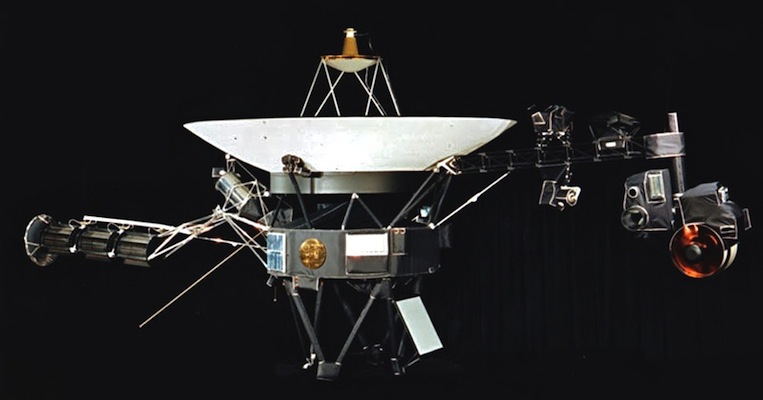 The Voyager, showing the container for the Golden Records.
The Voyager, showing the container for the Golden Records.
Almost on a whim, more than 40 years ago, a bunch of scientists decided that seeing as we were launching two robotic probe vehicles which, once they left our solar system, would drift in space for about 40,000 years before getting close to another planetary system, we might as well send along a couple of phonograph records containing, among other things, a wide variety of pieces of music from Earth.
The amazing things about that are legion; but the two that stick out farthest for me are that (1) the aforementioned scientists actually convinced otherwise sane and sober bureaucrats to go for it; and (2) the aforementioned scientists were able, in a rather short time frame, to kludge together bits and pieces that, in theory at least, might, 40,000+ years from now, enable The Good Lord Knows Who? to play the aforementioned phonograph records. Which are known to that segment of humankind that cares about such things as “The Voyager Golden Records.” (And not all such persons have closets full of Star Trek Original Television Series uniforms. Or so I have been assured.)
Obviously, bundling up for long-distance shipment a state-of-the-art-for-1977 phonograph turntable, tone arm, cartridge, amplifier, and speakers or headphones was out of the question. How the Voyager Golden Records team attempted to finesse that difficulty, as well as information on the music tracks, comes after the jump.
CLPS 0500 Perception and Mind, John Marks Guest Lecture Preparation (3)
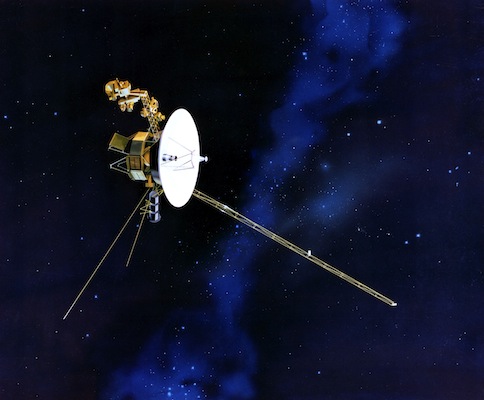 Artist’s conception courtesy NASA JPL.
Artist’s conception courtesy NASA JPL.
The above image is of a Voyager space probe. There is a fascinating connection between the Voyager program and Cultural Literacy in Music, and we will get to that soon.
But because my guest lectures will be Zoomed, I am concerned that if I sing or play musical examples, they might not come through well enough. Therefore, I want first to get some of the “Wires and Pliers” aspects of the physics of sound and music out of the way via uploads that you can look at and listen to. Here goes:
When I was a boy singer (I was a boy soprano, in fact) I had a music teacher who used to tell the story of a young musician or composer of the classical era (by which I mean circa 1775) who used to come home late after a night of carousing, and torment his musician or composer father (who was already in bed upstairs) by loudly playing all but the last note of a major-key octave scale. Continue Reading →
CLPS 0500 Perception and Mind, John Marks Guest Lecture Preparation (2)
If you had been wondering why I asked you to watch a live music video of Jamiroquai’s 1999 funk/dance song “Canned Heat,” the answer is found in the audio-only YouTube clip immediately above, a remastering of the original “Canned Heat Blues” from 1928.
In the US between 1920 and 1933, the sale of alcoholic beverages was banned. People who could not afford to pay the prices demanded by bootleggers for alcohol that was illegal (but which was intended for human consumption, and therefore as safe as the alcohol that previously had been legal) sometimes drank wood alcohol, which could easily blind you, and over the course of time, would kill you. Squeezing the alcohol out of jellied cooking fuel and drinking it surely would give you the “Canned Heat Blues.” This performance is quite a harrowing document. More information, including lyrics, here and here. Continue Reading →
CLPS 0500 Perception and Mind, John Marks Guest Lecture on “Music”
 Courtesy Stereophile magazine.
Courtesy Stereophile magazine.
Preparation for Participation, Part One
A recent article (Mehr, et al., 2019) posits that across all cultures, song (meaning music with words) is a “cultural constant.”
To put it as simply as possible, “Everybody sings.” (Or, at least: Most people, in all cultures, sing.)
This, in and of itself, should not be surprising. People in most (if not all) cultures have since earliest times always heard birds singing (although admittedly, on a spectrum from the most simple to the most complex bird songs). If you do a web search with the query: “relationship between birdsong and human song” you will be presented with an engrossing salmagundi of results, with this one at the top (“Birdsong and Human Language”).
(Note, read that article in full only if it interests you; I just wanted you to be aware of the concept of a relationship between birdsong, and human song and language.)
What I found remarkable in the Mehr 2019 study is that study’s mention of a previous paper by the same team, reporting the experimental finding that:
[U]ntrained listeners in 60 countries could on average discern the human behavior associated with culturally unfamiliar musical forms. These behaviors included dancing, soothing a baby, seeking to heal illness, or expressing love to another person.
In other words, ordinary listeners could tell what kinds of songs they were listening to, even when those songs came from far-away places and radically different cultures. Continue Reading →
A Very Persuasive Identification of the “Hidden Theme” of Elgar’s “Enigma” Variations
I am very grateful to Stereophile‘s John Atkinson for alerting me to an extraordinarily well-thought-out and, to me at least, persuasive identification of the “Hidden Theme” of Elgar’s “Engima” Variations.
Here’s the link to Ed Newton-Rex’s case that, when Elgar commented:
through and over the whole set [of variations] another and larger theme “goes”, but is not played
Elgar was referring to Pergolesi’s Stabat Mater. Details after the jump. Continue Reading →
Dorian Komanoff Bandy and Paul Cienniwa: Telemann, Sonatas for Violin and Harpsichord
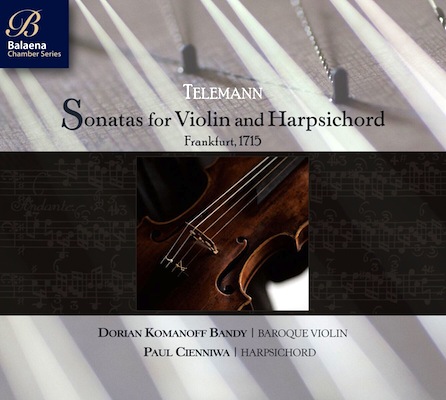
Dorian Komanoff Bandy and Paul Cienniwa:
G.P. Telemann: Frankfurt (1715) Sonatas for Violin and Harpsichord
CD Whaling City Sound Balaena Chamber Series wcs 108
Downloads (24-bit/96kHz stereo AIFF, ALAC, FLAC, and WAV) available from HDTracks.
Streaming available from Tidal. Total time 80:04.
Recorded at WGBH Studios, Boston, Massachusetts, June 16-17 2017. Malachai Bandy, producer; Antonio Oliart, engineer.
Georg Philipp Telemann (1681-1767) was a friend of J.S. Bach’s, and Godfather to Bach’s son C.P.E.; Telemann also knew Handel. In his own time, Telemann was frequently compared to both composers. That is all the more impressive, given that Telemann, unlike Bach, did not come from a family of musicians. Telemann was another one of those law students or lawyers who gave that career up to write music (that list includes Schumann, Sibelius, Stravinsky, and Tchaikovsky), and therefore, he was largely self-taught.
Telemann was extremely well respected in his own time. His prodigious productivity resulted in a list of works longer than Bach’s or Vivaldi’s. The 20th-c. music humorist Peter Schickele (stage name “P.D.Q. Bach”) made fun of Telemann’s great body of work by making the top prize for an (imaginary) classical-radio-station phone-in giveaway “The Complete Works of Telemann, on Convenient 45-rpm Records.” I found that to be rather funny, back when I was in college.
For information on this delightful recording and some sound samples, please click on the jump link: Continue Reading →


